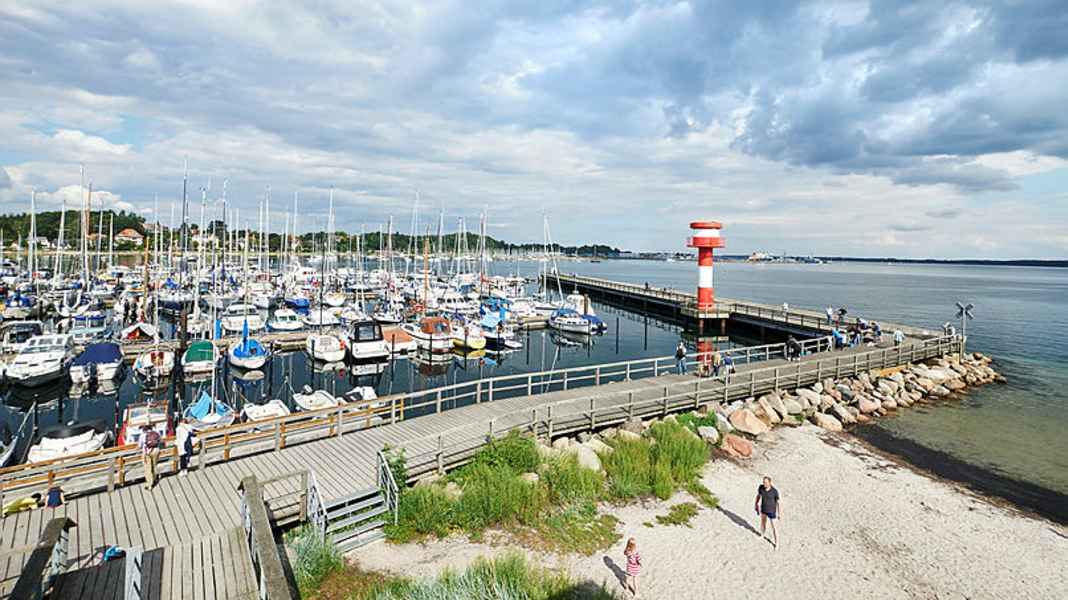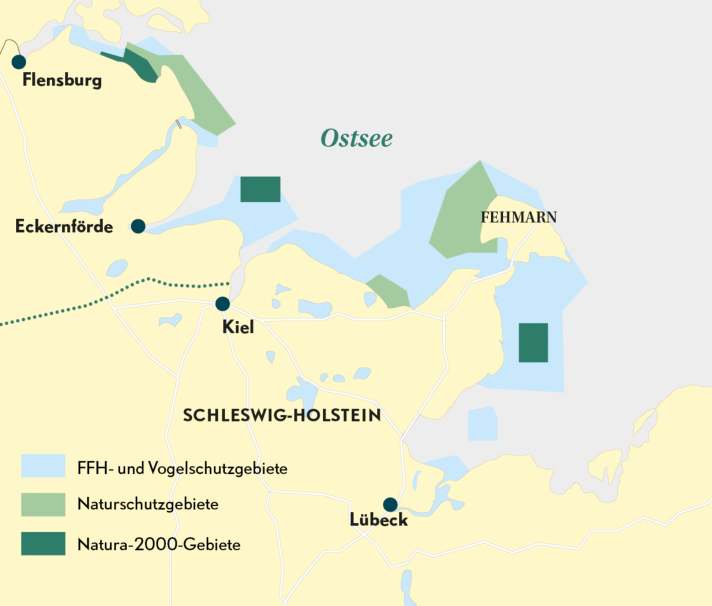
Mr Goldschmidt, the new Baltic Sea Action Plan was adopted a year ago. What measures does it provide for?
The most important aspects of the Baltic Sea Action Plan are to protect the Baltic Sea effectively and sustainably. We are responding to the serious problems facing our Baltic Sea - global warming, nutrient pollution, shipping, munitions and intensive tourism - by providing 16 specific measures. These include new protected areas, reduced nutrient inputs, but also a marine protection centre as a central point of contact for all user groups, including water sports enthusiasts.
Of particular interest to them is whether and how new protected areas could restrict water sports. Which areas are planned and which regulations directly affect water sports enthusiasts?
Our new protected areas cover around 12.5 per cent of Schleswig-Holstein's Baltic Sea area. Just under 4.5 per cent of these will be existing Natura 2000 areas, in which fishing will be prohibited in future, but water sports will be possible without restriction. The other 8 per cent or so will be stricter nature conservation areas where special consideration for nature will be required, especially in winter between November and March. Some seasonal restrictions are planned here.
Can you describe these restrictions in more detail? What specifically are you not allowed to do in the winter months?
Goldschmidt: We have defined this very precisely in the Baltic Sea Protection Action Plan in order to give those affected the best possible clarity: Between November and March, water sports will be restricted in the strictly protected areas - i.e. almost 8 per cent of Schleswig-Holstein's Baltic Sea - in order to ensure the necessary resting areas for migratory and resting birds. However, we will also designate zones in these areas where water sports are possible all year round. Harbour approaches will remain accessible at all times. In addition, there will be speed restrictions for motorised watercraft in these areas all year round. Water safety and sea rescue vessels are exempt from this.

Two years ago, after a ten-year consultation process, the North Sea Navigation Ordinance was issued with restrictions for water sports enthusiasts. The decision by the Federal Ministry of Transport came as a surprise to those affected, and not everyone feels that their interests have been taken into account. Now you would like to apply to the same ministry for the navigation bans you described. Can Schleswig-Holstein boaters be sure that there won't be much stricter regulations in the end?
You can only apply to the Federal Ministry of Transport for a navigation order. I can assure you of this: We as the state government have set clear guidelines in the action plan, which we will apply to the Federal Ministry of Transport in exactly the same way. We will monitor the process very closely and make it clear to the federal government that under no circumstances should additional restrictions be imposed over and above our application.
The action plan also provides for a ban on anchoring in seagrass beds. The WWF has created an app for navigating Wismar Bay and Greifswalder Bodden, which clearly shows the respective protection status and rules of conduct for water sports enthusiasts. Is something similar planned for the new protected areas?
Goldschmidt: Yes, we even want to actively promote this. We are also planning clear aids for our new Baltic Sea areas - apps or digital maps - so that everyone can clearly recognise where protected areas begin and what is permitted there. Boaters should also be able to clearly recognise where seagrass beds are located in order to protect these sensitive and important ecosystems by not anchoring there.
The action plan also mentions environmentally friendly anti-fouling systems and improved disposal facilities for black water in marinas as further measures. Are there any concrete plans here yet?
Discussions are already underway with harbour operators and water sports associations about more environmentally friendly underwater coatings and improved black water disposal. Here, too, I am pleased that water sports enthusiasts in particular are showing concrete interest and even making their own proposals to improve protection of the Baltic Sea.
You mentioned the new marine conservation centre. What exactly is this station supposed to do and what role could water sports organisations and clubs play?
The Baltic Sea Marine Conservation Centre will be a central contact point and coordination platform for nature conservation measures, monitoring, information and education and will have the status of the responsible nature conservation authority. It will actively involve stakeholders and organisations - including water sports enthusiasts, conservationists and tourism managers. We expressly hope that water sports organisations will also see this platform as an opportunity to initiate their own projects and take joint responsibility for the health of the Baltic Sea. The Baltic Sea has so many problems and challenges that we can only tackle them together anyway.
Will the results of the Baltic Sea Action Plan be scientifically monitored and evaluated?
Yes, the success of the measures is continuously accompanied by scientific monitoring. We have various reporting obligations to the EU and want to create a reliable, objective database that allows the public to recognise transparently and credibly what progress has been made in protecting the Baltic Sea.
You have experienced a lot of headwind from water sports enthusiasts in the country with your plans to establish a Baltic Sea National Park. How do you now assess the perception and acceptance of the new action plan in the boating community?
The debate about the national park was emotional, but it was by no means a blanket rejection. I received many very supportive messages, especially from water sports enthusiasts. But that's all water under the bridge now. The tone of the discussion has changed following the adoption of the Baltic Sea Protection Action Plan by the cabinet. Today, nobody denies the need to contribute to the protection of the Baltic Sea.
We have agreed a lower nutrient input with the agricultural sector. The most obvious contribution will certainly be made by fisheries, as there will no longer be any fishing on twelve and a half per cent of the Baltic Sea in future. Many water sports enthusiasts have also recognised that we all have to take responsibility for the Baltic Sea. I think that the contribution that the state government is now asking them to make is an important but modest one. In return, we will all find a healthier Baltic Sea. I believe that this is recognised and supported by many.

